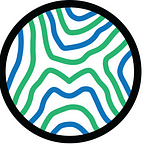Team Coral Buddies — automating the pre-processing of high-quality Sentinel-2 data for corral reefs
The following article covers the work of team Coral Buddies from the challenge of “Coral Reefs S.O.S.” part of the third Mothership Mission titled The Big Blue. For more info on the program visit the website.
Corals are one of the most important ecosystems of our planet. Around 500 million people depend on these ‘rainforests of the ocean’ for food, and livelihood but these ecosystems are under threat.
The benefits to humans are evident, but the ecological importance far exceeds our estimations. Corals serve as colonies for marine species to grow and have an impact on the entire food chain.
Outcry over the three major bleaching events in the last five years has hit the headlines for a few days but quickly drowned out.
What did we do?
We rolled up our sleeves and went to a hackathon that brought together eager, and talented individuals looking to solve the problem with the destruction of corals.
The Copernicus Hackathon under the name Mothership Coder Missions organized in the Hague by AI LAB One, WorldStartup, and Space4Good was structured and engaging. It helped us form a team, and more importantly, put us in touch with a person who was on the ground and in the water facing this challenge.
Who were we helping?
We spoke with Dr. Joanie Kleypas, a coral reef restoration hero, and scientist leading a team in Costa Rica. She was passionate about her work, from the scientific perspective, and practical work in the active areas. RCCR or Raising Coals Costa Rica was taking an innovative approach. They were raising coral babies in nurseries, grew them, and then planted the corals where the reefs were damaged.
Corals are animals if you were wondering. They form a fascinating symbiosis with algae that convert light to food and pay part of that to the corals for providing them a home. The damaged or dead reefs occur when the algae abandon the corals because of rising temperature, pollution, or sedimentation. The algae seemed to be particularly high maintenance tenants. Growing these animal-algae hybrids, and planting them was difficult enough, but the RCCR team had to accomplish this with limited time, and resources.
Site selection takes up to a year to collect data and determine the right spot. In addition to managing the nurseries and sites underwater, and performing analysis in the lab, and traveling eight hours on a bus to reach the site, the challenges were endless.
The more we found out about it, the problem became more real to us. Reading a newspaper headline like ‘Massive coral bleaching event occurs’ or ‘50% reef damaged in bleaching event’ shocks us, and looking at the white graveyard of corals invokes a sense of urgency and sadness: momentarily! Not being in a position to help, and life moves on with the news cycle. But the corals are still dying, and Joanie’s team is still facing these challenges to restore them.
Our team
We are a group of diverse individuals, all passionate about the cause, and inspired by the work of the organization. The combination of technical, and business perspectives brought a more rounded approach to the project. We wanted to focus on the user from the start, understand their challenges. To avoid falling in love with the solution, we focused on the user. But access to the user was not always possible. The excitement of working on interesting algorithms and datasets also piqued our interest.
Our journey had both technical and user side challenges not to mention the internal struggles to find the time. As a team, we were able to organize relatively well, with weekly meetings, and make progress. The conviction was there, and the team was meshing well, an important aspect for a project starting from conception.
Where are we now?
The idea always revolved around using satellite data to monitor the sites for the parameters that influence the corals, such as temperature, turbidity, sedimentation to name a few. To dive into the technicalities a bit, we were able to identify the good images using an algorithm.
Following this, we calculated the turbidity index. One of the key factors to monitor for successful planting of corals.
We plan to embed these analyzed images into a dashboard, to view the parameters for the sites.
What next?
This friendship has just started, and we have started to understand the problem, and what might help with the successful restoration. But we want to change ‘what might’ to ‘what will’ help the protection and restoration of corals. We want to help the people involved to have easy access to satellite data, to reduce costs of operations, and reduce the risk of harmful events for the coral sites.
We are looking for organizations involved with corals protection and restoration to learn more about the challenges and refine our product that can help them.
Written By: Damiano Pellegrino, Jeroen Franse, Gagan Reddy, Larissa Koupriouchina
Team Coral Buddies participated in the challenge co-organized with Rising Corals Costa Rika.
The Mothership is an open innovation program helping teams to develop a proof of concept and business model for solutions related to the Sustainable Development Goals. The program is co-organized by AI Lab One, Space4Good, and WorldStartup.
